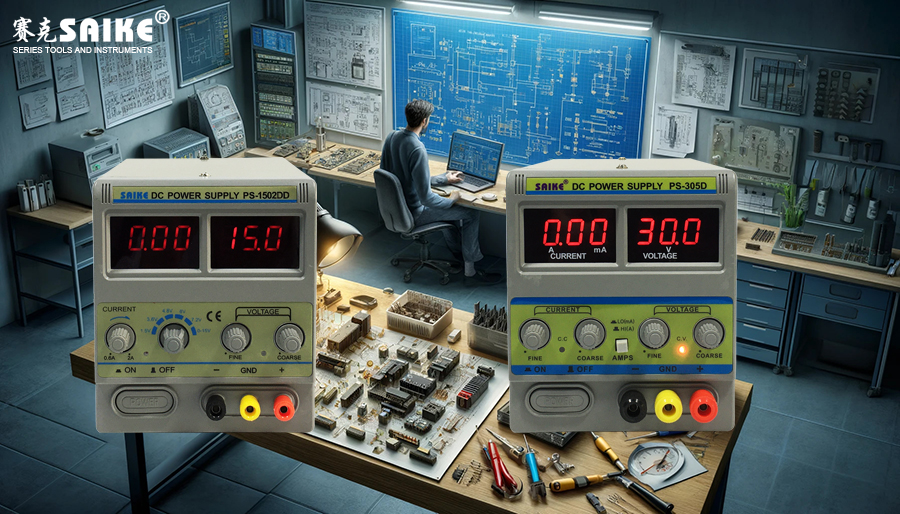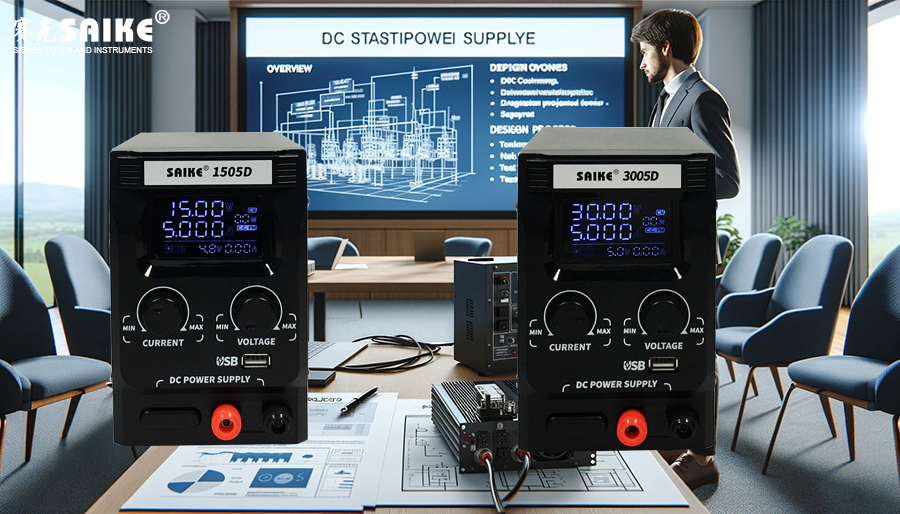
SK-YJ000ZLWYDY-KP 100021
Designing a DC stabilized power supply is a crucial aspect of electronic system development, requiring precise planning and execution to ensure that the power system’s performance meets the needs of specific applications. This involves selecting the appropriate topology, calculating the parameters of key components, designing and laying out the circuit, and conducting thorough testing and verification. Here are the detailed steps for designing a DC stabilized power supply:
I. Defining Power Supply Specifications
1.Determining Output Voltage and Current
– Decide on the required output voltage and maximum output current based on the load demand. This will affect the type of voltage stabilizer circuit chosen.
2.Input Voltage Range
– Specify the source of input voltage for the power supply, including the minimum and maximum input voltage values. This is crucial for selecting the type of voltage regulator and calculating component parameters.
3.Efficiency Requirements
– Set a target efficiency, which is often influenced by the thermal management and energy efficiency requirements of the application scenario.
4.Ripple and Noise Limitations
– Establish ripple and noise standards for the output voltage, which are particularly important for sensitive electronic equipment.
II. Selecting a Voltage Regulator Topology
1.Topology Type
– Choose a suitable topology based on the relationship between input and output voltage, as well as efficiency requirements, such as buck, boost, buck-boost, or more complex topologies like flyback.
2.Component Selection
– Select the main components suitable for the chosen topology, including switching elements (such as MOSFETs), inductors, capacitors, and voltage regulation control ICs.
III. Circuit Design and Simulation
1.Circuit Design
– Design the circuit based on the selected topology and choose an appropriate filter design to minimize output ripple.
2.Simulation Testing
– Use circuit simulation software (such as SPICE) to verify the circuit’s performance under different operating conditions, including transient response and steady-state performance.
IV. Circuit Board Design and Manufacturing
1.PCB Layout
– Design the PCB, optimizing the layout to reduce noise, minimize interference, and improve thermal management performance. Pay special attention to the isolation of high-frequency switching paths and sensitive signal paths.
2.Component Installation
– Ensure that all high-power components have adequate heat dissipation measures, such as installing heat sinks or adopting other cooling methods if necessary.
V. Prototype Production and Testing
1.Building a Prototype
– Create a power supply prototype based on the design drawings.
2.Laboratory Testing
– Conduct comprehensive testing on the prototype, including efficiency testing, output stability testing, and thermal performance testing. Ensure that the power supply meets all predetermined performance indicators.
VI. Iterative Optimization
1.Problem Diagnosis
– Analyze the problems found during testing and make necessary adjustments to the design.
2.Retesting
– Conduct a new round of testing on the modified design to verify whether the problems have been resolved.
VII. Conclusion
Designing a DC stabilized power supply is a systematic engineering project that requires precise design, rigorous testing, and continuous optimization in multiple stages. By following the above steps, a high-performance, high-efficiency DC stabilized power supply that meets the requirements of specific applications can be designed.


